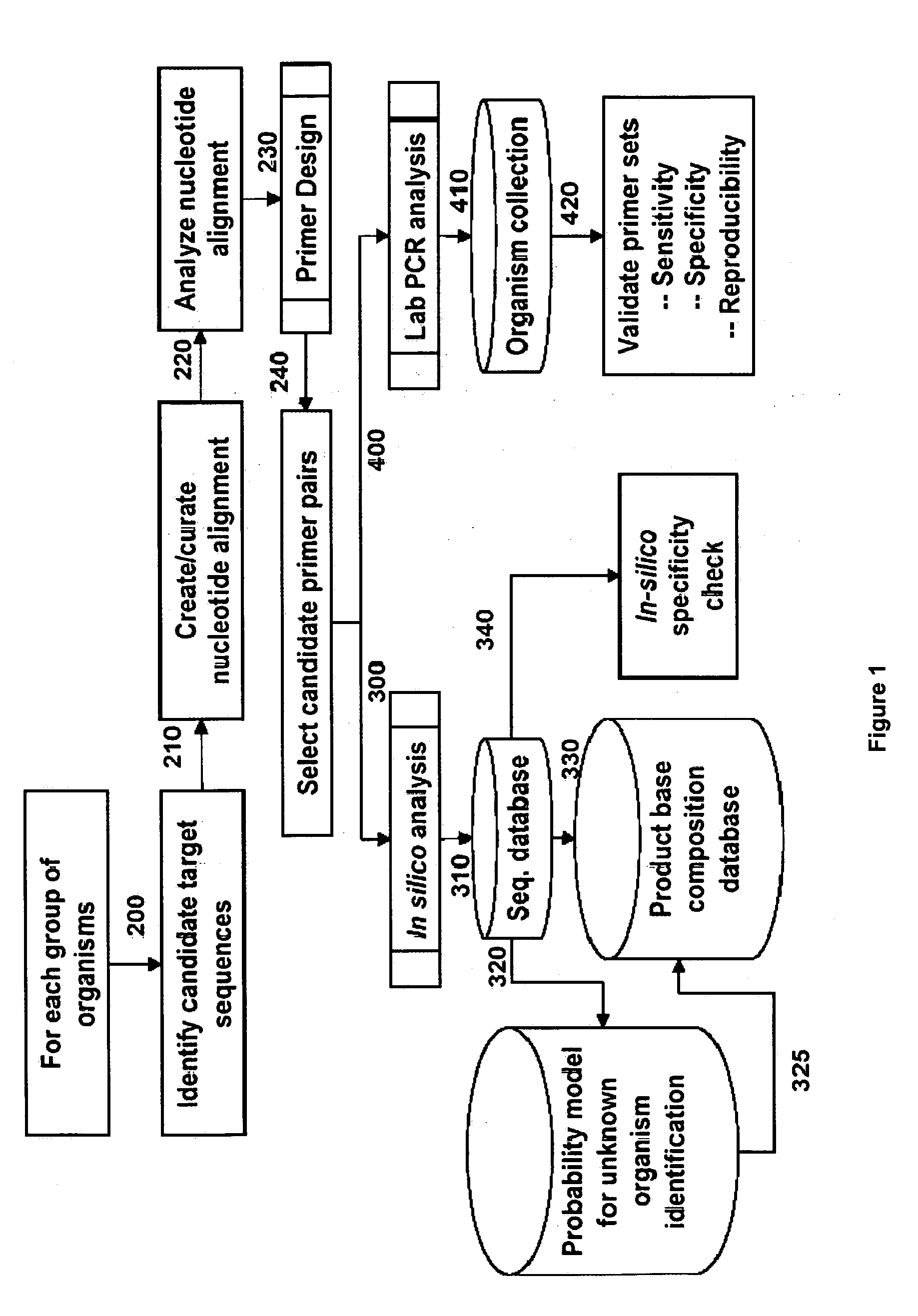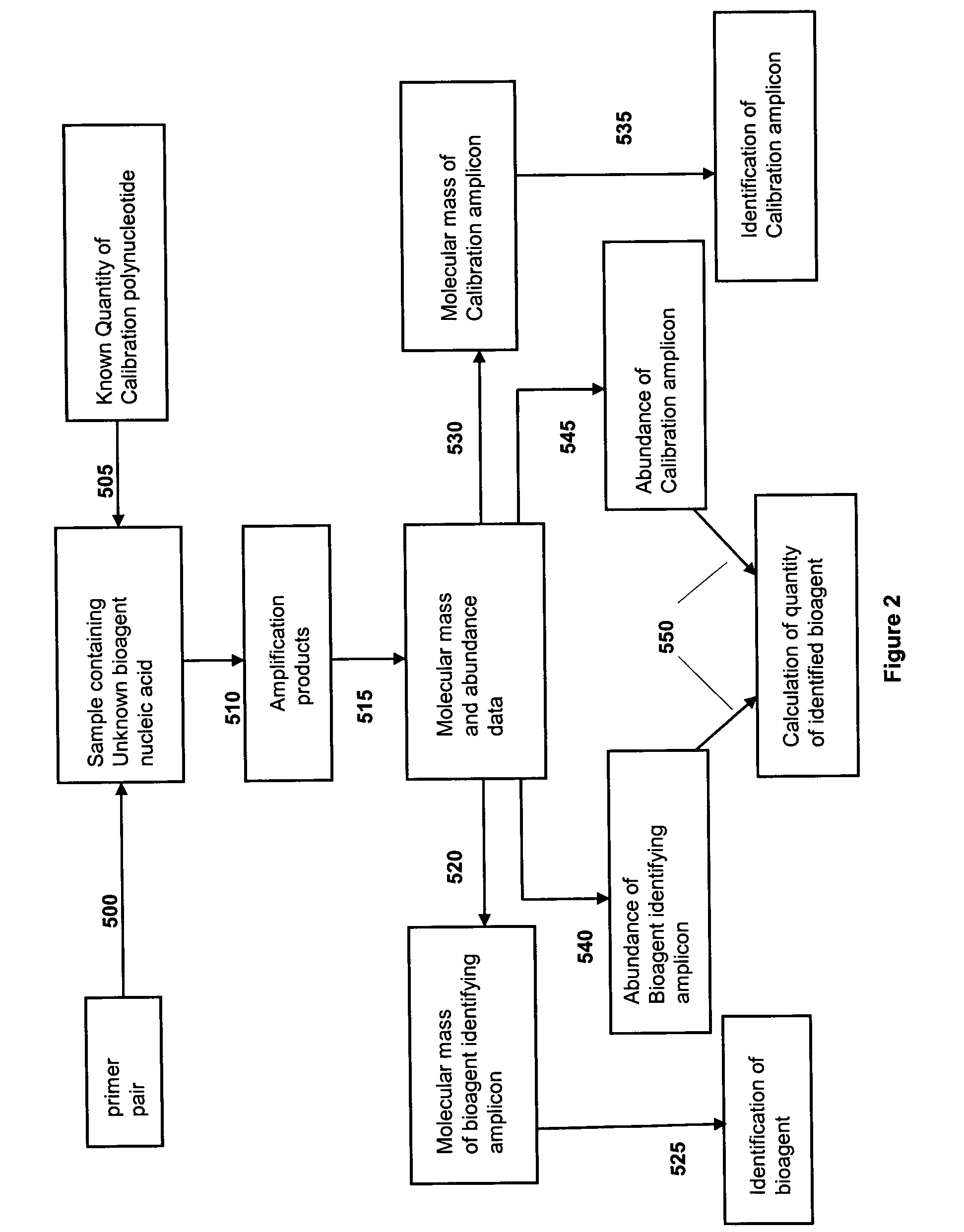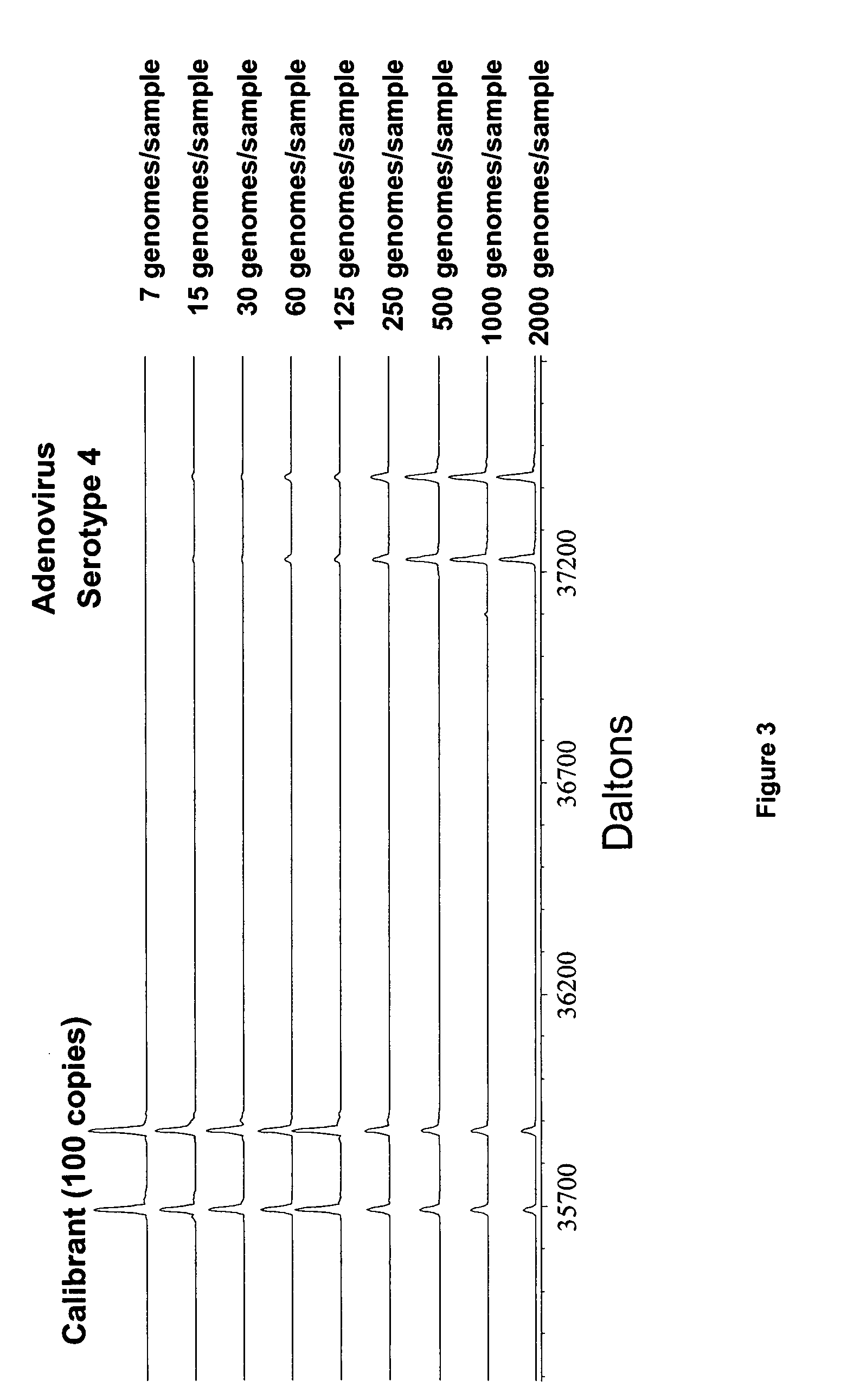Compositions for use in identification of adenoviruses
a technology for identifying adenoviruses and compositions, applied in biochemistry apparatus and processes, organic chemistry, sugar derivatives, etc., can solve the problems of heterogeneous populations and difficult isolation of adenoviruses
- Summary
- Abstract
- Description
- Claims
- Application Information
AI Technical Summary
Benefits of technology
Problems solved by technology
Method used
Image
Examples
example 1
Design and Validation of Primers that Define Bioagent Identifying Amplicons for Adenoviruses
A. General Process of Primer Design
[0207] For design of primers that define adenovirus identifying amplicons, a series of adenovirus genome segment sequences were obtained, aligned and scanned for regions where pairs of PCR primers would amplify products of about 45 to about 150 nucleotides in length and distinguish subgroups and / or individual serotypes from each other by their molecular masses or base compositions. A typical process shown in FIG. 1 is employed for this type of analysis.
[0208] A database of expected base compositions for each primer region was generated using an in silico PCR search algorithm, such as (ePCR). An existing RNA structure search algorithm (Macke et al., Nucl. Acids Res., 2001, 29, 4724-4735, which is incorporated herein by reference in its entirety) has been modified to include PCR parameters such as hybridization conditions, mismatches, and thermodynamic cal...
example 2
Selection of Primers that Define Bioagent Identifying Amplicons for Identification of Adenoviruses
[0209] Initial primer design began with the design of primer pairs to produce bioagent identifying amplicons representing segments of the adenoviral hexon gene. These primer pairs were designed to perform a variety of tasks ranging from the general detection of all adenovirus strains to the identification of specific serotypes. Because, in some embodiments, base composition is the final analysis product, one primer pair can be used to identify many serotypes provided that the amplified region has sufficient variation (one base change or more). At the conclusion of the testing phase, a two primer pair test set was selected. These 2 primer pairs (primer pair nos: 943 (SEQ ID NOs: 61:122) and 769 (SEQ ID NOs: 26:121) produce amplicons whose base compositions specifically demonstrate the presence of adenovirus and, in most cases, are simultaneously diagnostic for the serotype of the adenov...
example 3
Sampling Procedures
[0212] Samples were gathered from military barracks during an IRB approved study conducted by the Naval Health Research Center Respiratory Disease Laboratory, San Diego. Environmental samples were obtained from eight locations and included surface swabs and air samples collected by dry filter unit air collection and electronic air collectors. Clinical surveillance was conducted by obtaining 1,700 clinical samples from throat, serum and hand swabs using standard clinical protocols which are well known to those with ordinary skill.
PUM
| Property | Measurement | Unit |
|---|---|---|
| Fraction | aaaaa | aaaaa |
| Fraction | aaaaa | aaaaa |
| Fraction | aaaaa | aaaaa |
Abstract
Description
Claims
Application Information
 Login to View More
Login to View More - R&D
- Intellectual Property
- Life Sciences
- Materials
- Tech Scout
- Unparalleled Data Quality
- Higher Quality Content
- 60% Fewer Hallucinations
Browse by: Latest US Patents, China's latest patents, Technical Efficacy Thesaurus, Application Domain, Technology Topic, Popular Technical Reports.
© 2025 PatSnap. All rights reserved.Legal|Privacy policy|Modern Slavery Act Transparency Statement|Sitemap|About US| Contact US: help@patsnap.com



